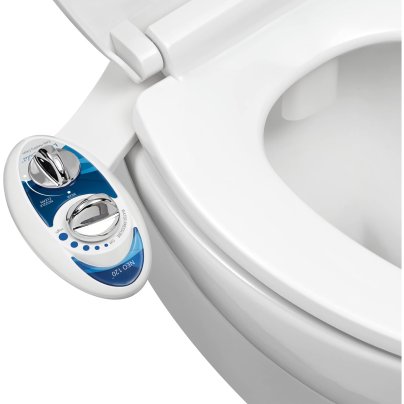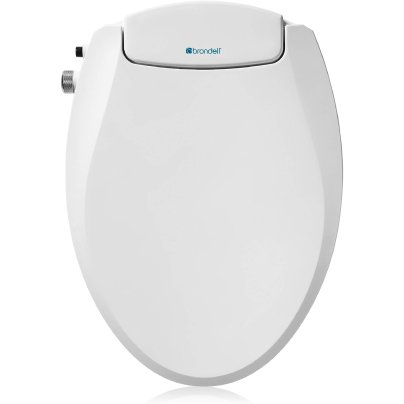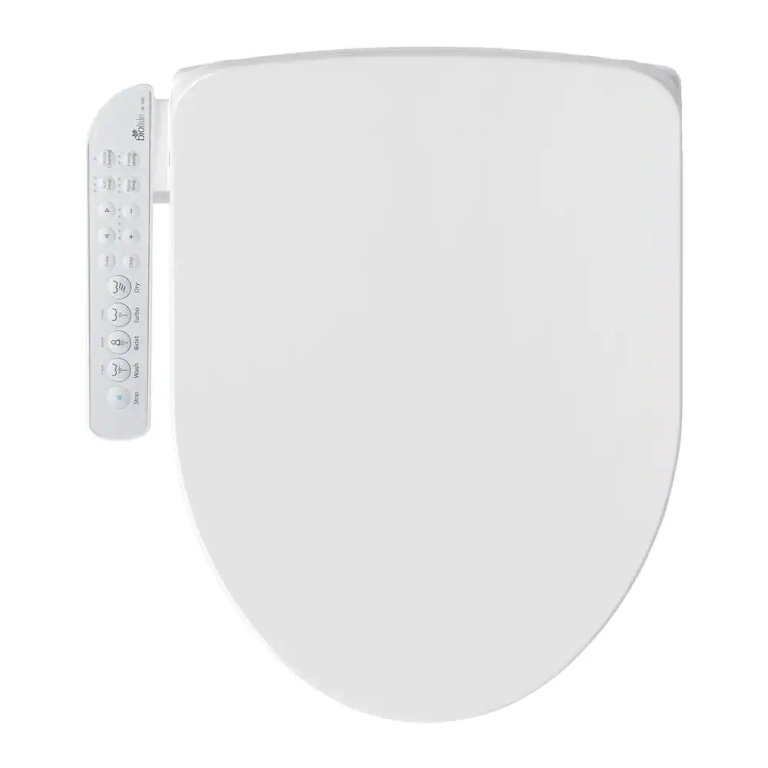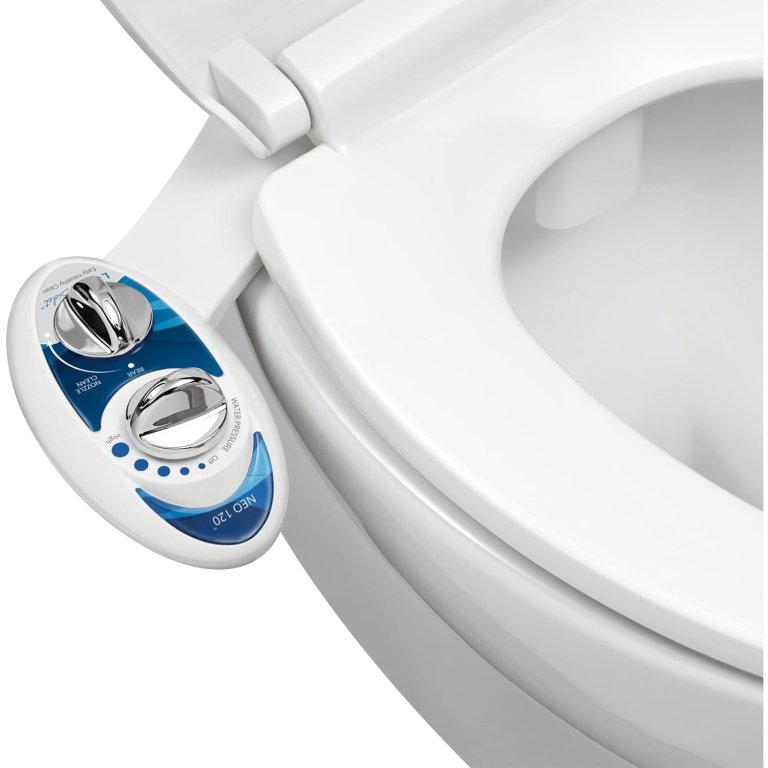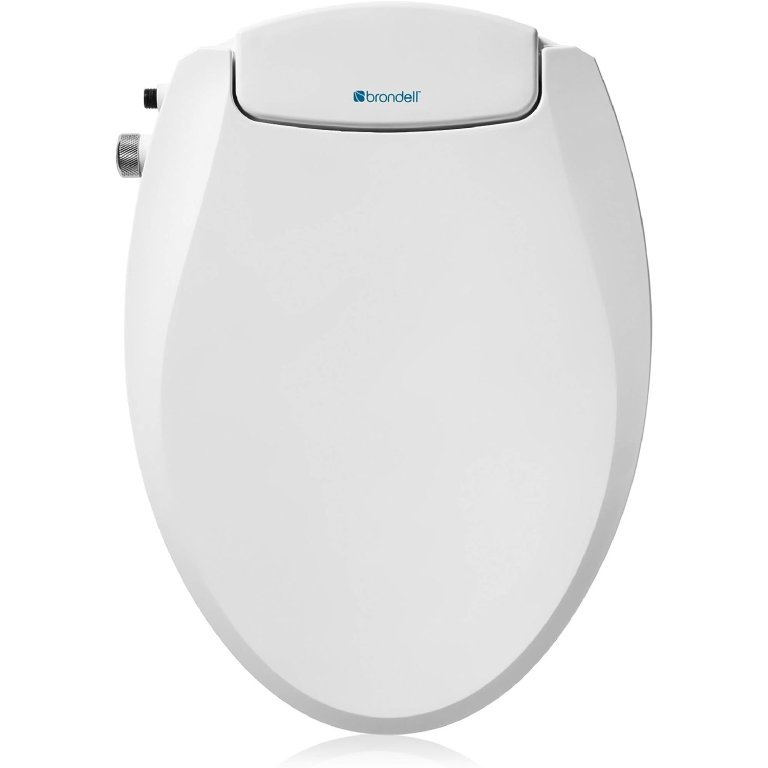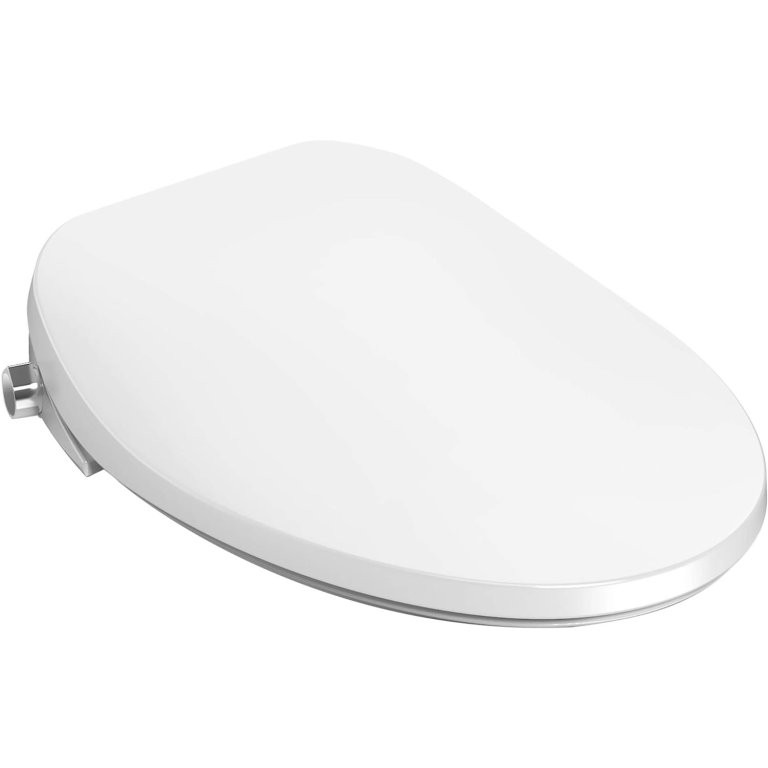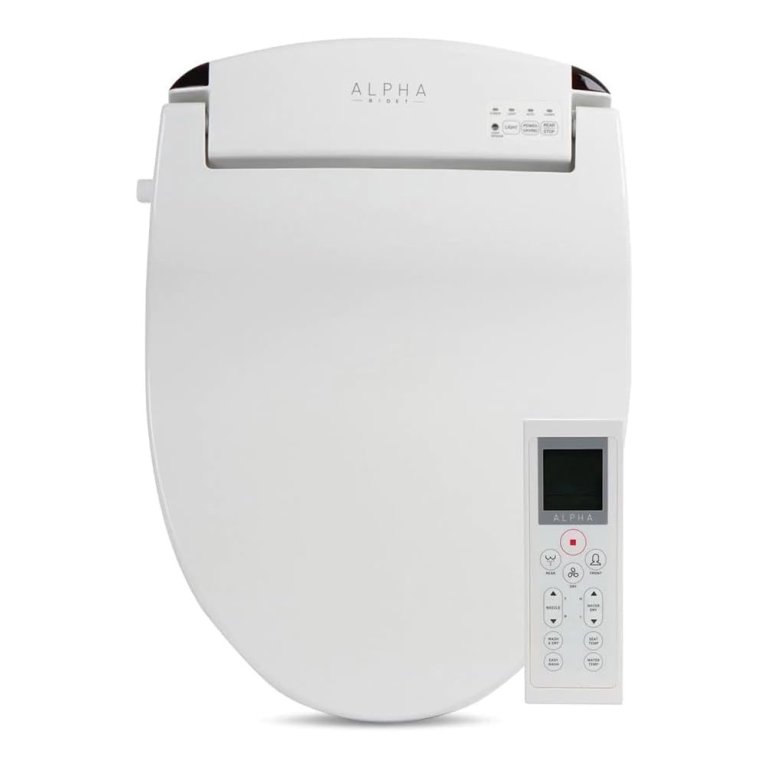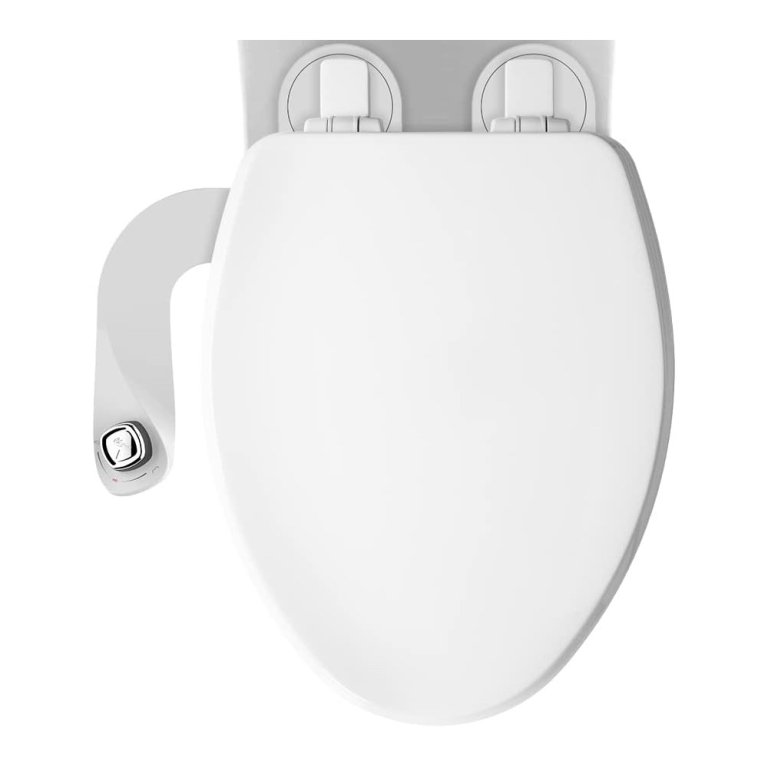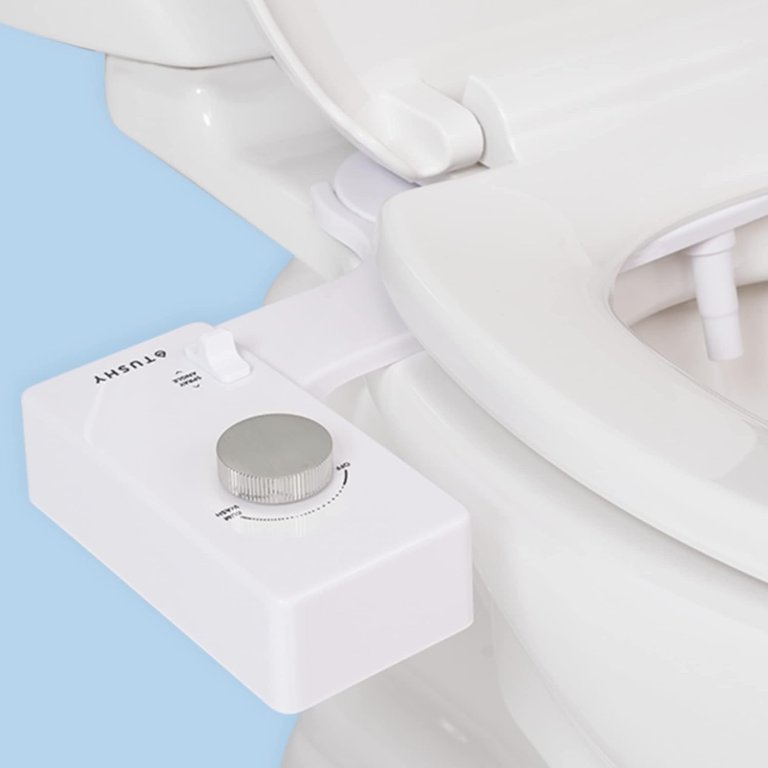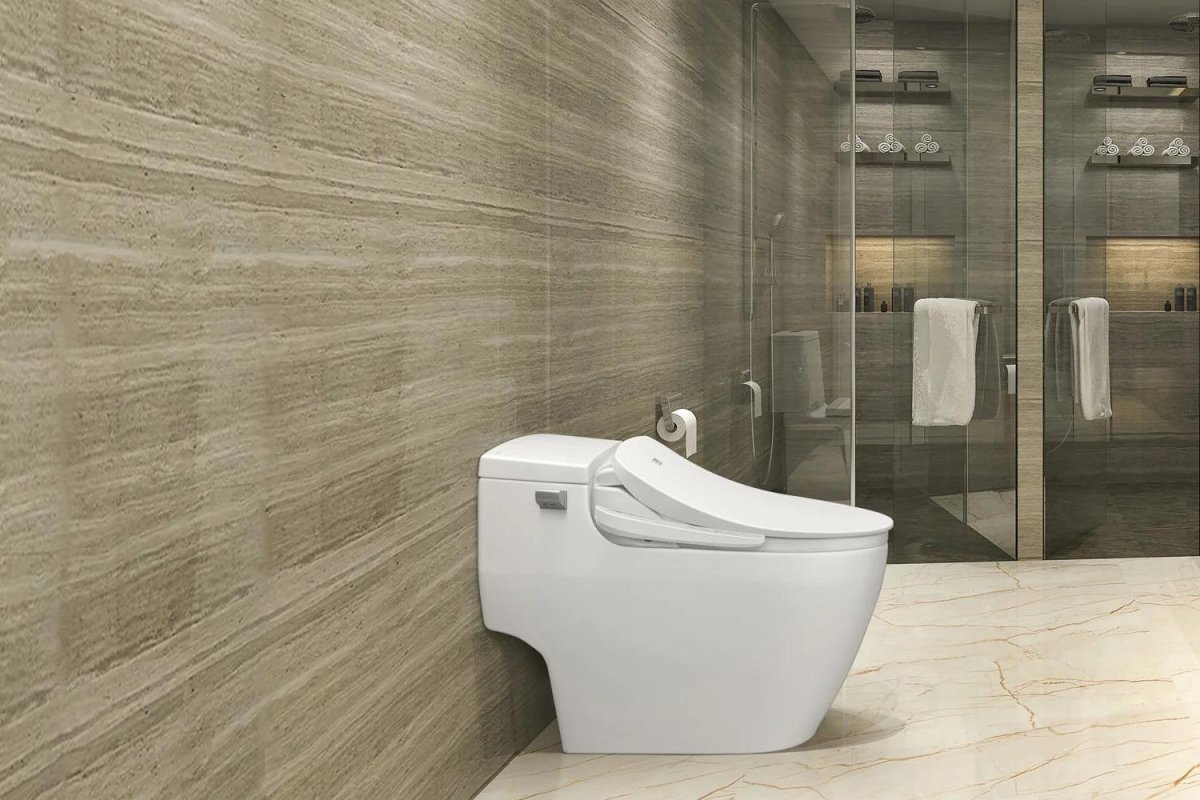
We may earn revenue from the products available on this page and participate in affiliate programs. Learn More ›
A new wave of bidet toilet seat design is making these devices more popular than ever. While this type of intimate cleaning may never be the subject of dinner conversation, there are now more and better ways to do so than ever before. Bidet toilet seats have several advantages over traditional cleaning. There’s no physical contact, so they are more hygienic. They can reduce the inflammation and discomfort that some people experience when using toilet paper, and there’s no paper waste to block drains or release greenhouse gasses as it breaks down.
To help prospective buyers understand the variety and features offered, over 40 different models were thoroughly researched to create this list. In the article below, you’ll find clear and easy-to-understand explanations of all the key elements to consider when shopping for an attachable bidet toilet seat. We’ve provided a collated list detailing the best designs for comfort and personal hygiene.
- BEST OVERALL: Bio Bidet HD-7000 Bidet Seat
- BEST BANG FOR THE BUCK: Luxe Bidet Neo 120 Bidet Attachment
- BEST MANUAL: Brondell EcoSeat S101 Non-Electric Bidet Toilet Seat
- BEST DUAL-NOZZLE: American Standard AquaWash 2.0 Electric SpaLet Bidet
- BEST FOR SENIORS: Alpha Bidet Alpha JX Bidet Toilet Seat
- BEST WITH DRYER: Toto Washlet C5 Bidet Toilet Seat
- BEST NONELECTRIC: Mayfair Kendall Seat and Bidet Bundle
- BEST ADD-ON: Tushy Classic 3.0 Bidet Toilet Seat Attachment
How We Chose the Best Bidet Toilet Seats
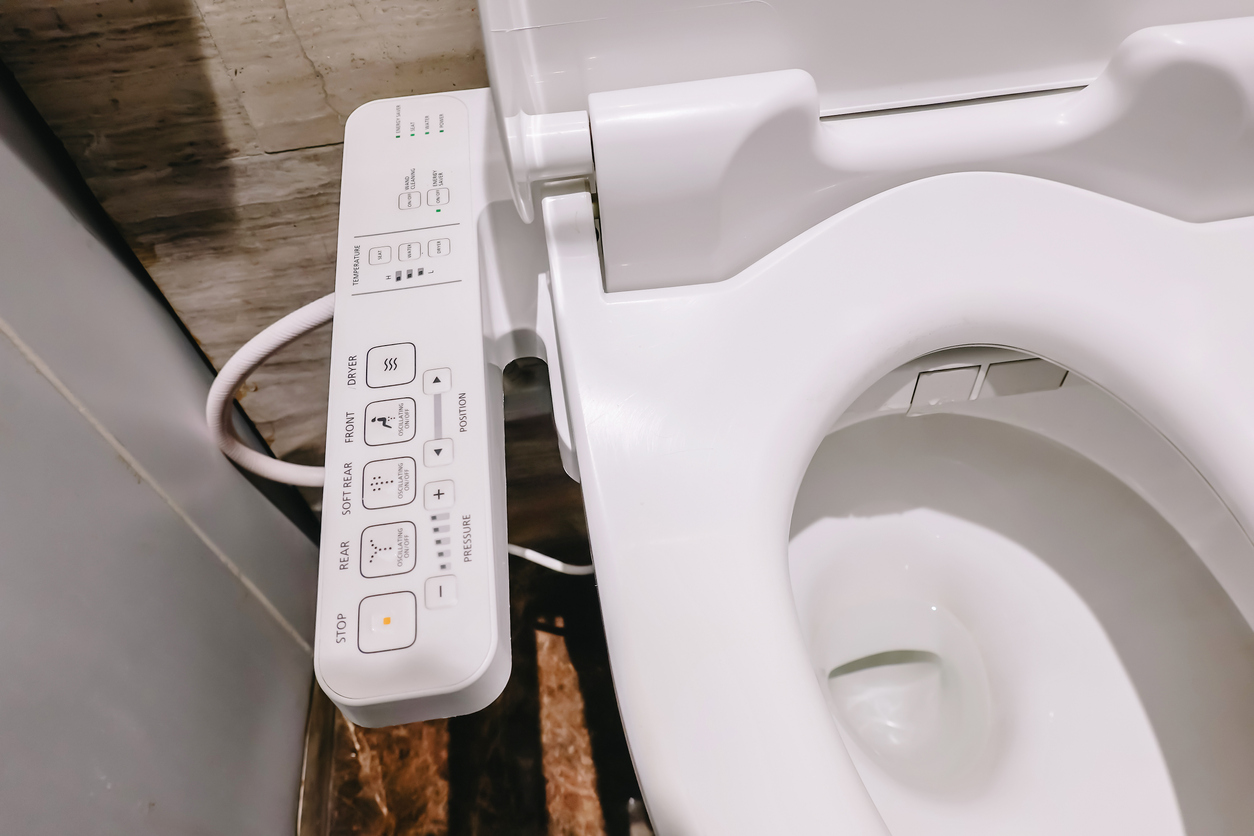
At the entry-level, a toilet seat bidet can be very affordable–certainly much more so than classic stand-alone bidets. They are perfectly functional, if a little basic. At the opposite end of the scale are luxury models that offer every comfort and convenience. When putting together this carefully collated selection, we wanted to ensure we included something for everyone.
To do that we investigated a number of factors. Appearance and comfort often go hand in hand, so it’s nice for seats to have a low profile that has minimal impact on the original seat height. The variety of controls and how easy they are to operate was a key factor. Nozzle functionality varies. We also considered high-end elements like warm air drying and heated seats.
Around the House with Eric G’s Eric Goranson, a certified kitchen and bathroom designer with over 20 years of experience, points out the convenience bidet toilet seats offer to people with mobility issues or those in assisted living. “It’s all about bringing back a sense of dignity to their lives, as they no longer need to rely on others for help,” he says. Another consideration highlighted by Rick Berres, owner of remodeling experts HoneyDoers in Lakeville, Minnesota, is the impact on septic systems: “The less things that go down your toilet, the less chance you have for clogs.”
Our Top Picks
We chose the following best bidet toilet seats to meet as wide a variety of needs as possible. Each has been given a category, helping shoppers narrow the search and quickly find the model that fits their requirements.
Best Overall
Bio Bidet HD-7000 Bidet Seat
Pros
- High-quality model offers the most comprehensive feature set available for the money
- Seat sensor detects user presence, so it doesn’t use power when unoccupied
- Step-by-step instructions and support agents for those who prefer DIY installation
Cons
- Comes with a premium price tag
- Rare breakdowns have been reported by consumers
Product Specs
- Elongated or round: Both
- Control: Multifunction side panel
- Nozzle(s): 3-in-1
The Bio Bidet HD-7000 is the best bidet toilet seat overall. Surprisingly, the decision was relatively easy. Like many, it is available as a round or elongated bidet toilet seat, but no other model we looked at offered as comprehensive a feature set for the money.
Although we have yet to find a true smart bidet toilet seat, this one comes close. It has a seat sensor that detects occupancy, so it doesn’t waste energy when not in use. The adjustable stainless steel nozzle has three positions for rear, front, and turbo wash. All bidets have adjustable water pressure, but the Bio Bidet HD-7000 adds a heated seat, warm water, and drying. There’s a slow-closing lid and even a night-light.
The Bio Bidet HD-7000 plugs into a convenient outlet so installing this electric bidet toilet seat should be within the capabilities of DIYers. Customer support agents are available to help.
Get the Bio Bidet bidet toilet seat at The Home Depot.
Best Bang For The Buck
Luxe Bidet Neo 120 Bidet Attachment
Pros
- Fits any standard toilet seat providing bidet cleanliness for remarkably little money
- Easy-to-use manual controls for water pressure and nozzle cleaning
- Installation is simple with high-quality steel hose and necessary tools included
Cons
- The single nozzle is nonadjustable and provides rear wash only
Product Specs
- Elongated or round: Fits both
- Control: Adjustable water pressure, nozzle clean
- Nozzle(s): Single, nonadjustable
Although it is fairly basic, the Luxe Bidet Neo 120 manual bidet toilet seat attachment proves that anyone can benefit from the added personal comfort and cleanliness that these devices provide.
There are side-mounted controls for water pressure and nozzle cleaning. The nozzle angle is not adjustable and only provides rear cleaning, but it does retract behind a shield to maintain hygiene and provide a sleek appearance.
The Luxe Bidet fits any standard seat with rotatable adjustment plates, using them for a secure fit. The promise of “zero gaps” means it won’t change the existing seat height. Necessary wrenches, a high-quality braided steel hose, and fittings are included, so installation couldn’t be easier.
Get the Luxe bidet toilet seat at Amazon or Walmart.
Best Manual
Brondell EcoSeat S101 Non-Electric Bidet Toilet Seat
Pros
- Popular and affordable low-profile model with soft-close seat and sit-on lid
- Offers both front and rear cleaning with individual pressure adjustment
- Uses water pressure only, so it is very straightforward to fit
Cons
- A few owners have had some durability issues
Product Specs
- Elongated or round: Both
- Control: Adjustable water pressure, nozzle selection
- Nozzle(s): Dual, nonadjustable
Upgrading to a complete bidet toilet seat is easy and affordable with the Brondell EcoSeat. This is a manual device that makes installation a breeze. The Brondell offers more advanced washing facilities and a soft-close seat with a sturdy sit-on lid.
The chrome control dial is both stylish and discreet. Turning it anticlockwise selects front cleaning while turning it clockwise selects rear. Further rotation is all that’s needed to increase the water pressure to the desired level. When not in use, the self-cleaning nozzles retract to maintain hygiene. The Brondell manual bidet toilet seat is available for both round and elongated toilets.
Get the Brondell bidet toilet seat at Amazon, Lowe’s, or The Home Depot.
Best Dual-Nozzle
American Standard AquaWash 2.0 Electric SpaLet Bidet
Pros
- Dual self-cleaning nozzles with constant warm water and choice of 2 temperatures
- A single discreet side dial with night-light provides control of all functions
- Slow-close seat and lid with single button removal for cleaning if necessary
Cons
- Relatively high price
- Not available as a round bidet toilet seat
Product Specs
- Elongated or round: Elongated
- Control: Adjustable water pressure, 2 water temperatures, 2 seat temperatures
- Nozzle(s): Dual, nonadjustable
The dual-nozzle action of the American Standard bidet toilet seat translates to two different nozzles that each advance independently to provide back or front cleaning. After use, the nozzle retracts out of the way. The manufacturer claims that the nozzle angle has been engineered for thorough cleansing. As always, water pressure is adjustable.
What elevates the AquaWash 2.0 is the extras. The water is warmed instantly to one of two temperatures set by the user. American Standard also offers the luxury of a warm bidet toilet seat, again with two temperatures to choose from. A single unobtrusive manual side dial with a soft-glow night-light controls everything. It takes a little while to learn to operate but soon becomes second nature. A slow-close lid and seat complete the feature set.
Get the American Standard bidet toilet seat at Amazon, Lowe’s, or The Home Depot.
Best For Seniors
Alpha Bidet Alpha JX Bidet Toilet Seat
Pros
- Packed with features that are accessed via handheld remote with clear LCD display
- Antimicrobial aluminum nozzle offers multiple adjustments plus oscillation for thorough cleansing
- Energy-efficient tankless warm water plus power-saving economy modes
Cons
- Quite expensive when compared to other bidet toilet seats on our list
Product Specs
- Elongated or round: Both
- Control: Multifunctional remote control
- Nozzle(s): Single, adjustable
An advanced bidet toilet seat often comes with an extensive control panel. While these are usually intuitive, there are a couple of potential drawbacks. They aren’t great for left-handed users, but more importantly, they can be challenging for seniors or those with limited mobility. The solution offered by the Alpha Bidet Alpha JX is a multifunctional handheld remote control. It has easy-to-use buttons and a clear LCD screen. When not required, the remote sits in a caddy on the side of the toilet or a convenient wall.
The Alpha Bidet Alpha JX has a host of other features. There’s adjustable heat for water, a heated toilet seat with temperature control, and air-drying. Choose from the one-touch easy wash or the one-touch wash/dry function. The self-cleaning aluminum nozzle is antibacterial and offers adjustable pressure. Wash options include front, rear, and wash plus oscillation. Finally, there’s a night-light with an ambient light sensor so users don’t have to remember to turn it on and off.
Get the Alpha Bidet bidet toilet seat at Amazon or The Home Depot.
Best With Dryer
Toto Washlet C5 Bidet Toilet Seat
Pros
- A high-tech electronic bidet that offers 3 variable warm air-drying options
- Uses Ewater with hypochlorous acid for powerful nozzle cleaning
- User-friendly features include Premist function for easier cleaning and an automatic air deodorizer
Cons
- It’s quite expensive, yet there’s no night-light
- Hot water takes time to heat up
Product Specs
- Elongated or round: Both
- Control: Multifunction remote control
- Nozzle(s): Single, adjustable
Toto is one of the industry’s leading brands with a high-tech collection that varies from heated toilet seat bidets to automatic bidet toilet seats that can even flush themselves. The Washlet C5 is one of its midrange models, but by any standards, it’s a tremendously impressive device.
The dual-action nozzle offers warm, aerated water that is claimed to clean more effectively at lower pressures. It also has pulse and oscillating functions. Whereas most competitors use tap water to rinse nozzles, the Toto Washlet C5 electrolyzes it to create Ewater with hypochlorous acid for more powerful cleaning. The dryer offers three temperature settings with each of them variable, and the seat is heated, too. The bowl is pre-misted each time for easier cleaning, and there’s even an air deodorizer to freshen the toilet area.
Surprisingly, given the price, there is no night-light. Also, hot water is not instant but comes from a tank. If it’s emptied, it can take up to 10 minutes for it to reheat.
Get the Toto bidet toilet seat at Amazon, Lowe’s, or The Home Depot.
Best NonElectric
Mayfair Kendall Seat and Bidet Bundle
Pros
- A well-made and budget-friendly combo of manual bidet and toilet seat
- Durable metal components with adjustable fit and a “never loosens” promise
- Very straightforward installation with seat that removes easily for cleaning
Cons
- Although hugely popular, some buyers have been dissatisfied with quality control
Product Specs
- Elongated or round: Both
- Control: Adjustable water pressure
- Nozzle(s): Dual, nonadjustable
The Mayfair Kendall bidet bundle is made by U.S.-based Bemis, an international company well known for manufacturing bathroom products, which also has a long history of making traditional wooden toilet seats. This modern combo takes advantage of the company’s extensive experience and offers an efficient manual bidet and toilet seat at a competitive price.
Bidet components are durable steel with a white finish that matches the toilet seat, plus a chrome-topped knob to adjust water pressure. Unlike some of the more basic models, the Mayfair Kendall has dual nozzles for front and rear cleaning. These retract behind a splash guard when not in use. The no-slam toilet seat and lid can be adjusted to suit different toilet sizes and come with a “never loosens” promise.
Get the Mayfair bidet toilet seat at Amazon.
Best Add-On
Tushy Classic 3.0 Bidet Toilet Seat Attachment
Pros
- Unique precision spray means a single nozzle provides front and back cleaning
- According to Tushy, the simple DIY installation can be completed in 8.5 minutes
- Comes in a range of 9 color combinations to suit any bathroom decor
Cons
- More expensive than similar competitors, and some would prefer a more concentrated spray
Product Specs
- Elongated or round: Fits both
- Control: Adjustable water pressure
- Nozzle(s): Single, adjustable
The Tushy Classic 3.0 is another easy-to-fit bidet attachment for toilet seats. Tushy claims the installation job can be completed in 8.5 minutes or less and that the included adjustable fasteners will fit almost all toilets. The main panel has a patented “Schmutz Shield” that helps keep the toilet clean and is easy to wipe down.
The main difference between the Tushy Classic 3.0 and many competitors is that the self-cleaning “Smart Spray” nozzle angle is adjustable, so only one is necessary for both front and back cleaning. This also means there’s less to go wrong. Another interesting feature is that there are nine color combinations, including antimicrobial bamboo or brass knobs, making the Tushy Classic 3.0 easy to match to bathroom decor.
Get the Tushy bidet toilet seat at Amazon or Walmart.
Jump to Our Top Picks
What to Consider When Choosing a Bidet Toilet Seat
There are a whole host of features to think about when choosing the best bidet toilet seat for a bathroom. While some elements can improve personal comfort, there is generally a price to pay. In the following section, we look at each of these to help shoppers decide which are important.
Shape and Appearance
The main decision over shape is quite a basic one, and that’s whether the existing toilet is round or elongated. Beyond this are elements of the design that impact overall appearance such as bulk and seat profile. Many come close to that of a standard seat, so sitting feels the same as it always did. However, a raised toilet seat with bidet might be preferred by those with reduced mobility.
The back of the seat may be where the nozzles, plumbing, and controls are housed, and this area is larger on some models than others. There could also be side-mounted controls to consider. These vary from a barely noticeable knob to just a couple of dials to an array of push buttons. There are also those with remote control that can be particularly discreet.
Compatibility and Installation
Compatibility shouldn’t be an issue in the majority of cases. Either an elongated or round bidet toilet seat will fit most standard models. That said, there are numerous custom-size toilets on the market, so it’s important to check size and exactly how it fits.
Bidet toilet seat installation varies, but none are especially challenging. Nonelectric bidet seats are easiest as they just require a cold water supply. As it’s already there at the toilet, adding an additional branch will be within most DIYers’ capabilities. All necessary components are often included.
The research for this list did not turn up a battery-powered bidet toilet seat, so those with heated water and seat functions or lighting will require a main electrical supply. Some simply plug into a convenient outlet. These should be fitted with a ground-fault circuit interrupter (GFCI) for safety. Hard wiring is also an option. We advise those who are not completely confident in their electrician skills to call a professional. Water and bad electrics are a potentially lethal combination.
Ease of Use
Even on the most basic bidet toilet seats there is often a period of adjustment after installation. This will usually be experimentation with water pressure but might also include nozzle adjustment. In general, people acclimate rapidly to their new device.
On more advanced models, there can be a greater learning curve. It’s not that operating the bidet is technically more difficult; it’s just that there are more options to get accustomed to. In addition to water pressure, there may be temperature, seat heat, dryer adjustments, and even individual memories that need to be set.
Features
Features may be controlled from a simple dial, a panel that sits alongside the toilet, or via remote control. Actual functions vary considerably but may include:
- Twin nozzles for front and back cleaning, independently adjustable
- Pre- and post-rinsing for cleanliness
- Nozzles that retract after use
- Soft-close seat and lid
- Water pressure is always adjustable; seat and water temperature may also be
- There may be presets for things like child-friendly cleaning, massage cleaning, turbo wash, etc.
- A warm air dryer is provided on some
- A night-light is another option
The range of possible extras is now so extensive, for those with the appropriate budget, it can be like building their own custom bidet toilet seat.
FAQs
We’ve discussed important features with examples of the best bidet toilet seats available. The necessary research also brought up some questions of a general nature, which are answered here.
Q. Is bidet water the same as tap water?
Yes, bidet water is the same as tap water. It’s the same as that supplied to your toilet for flushing, thus making installation of bidet toilet seats relatively straightforward.
Q. Can you put a bidet toilet seat on any toilet?
There are options for both round and extended seats, so although there may be a few exceptions, it should be possible to fit a bidet to the vast majority of toilets. Sizes should be provided so you can check this.
Q. How do you use a bidet?
Using a bidet toilet seat is very easy. Remain in your normal seated position and use the water jet or jets to rinse the area clean. Some also offer drying. When first installed, there may be a short period of adjustment until you get it just right, but after that, it should be quick and simple.
Q. Do bidets use a lot of electricity?
Manual bidet toilet seats use no electricity at all and simply work on water pressure. Others will depend on the performance and features offered. After checking with a leading manufacturer, plus a couple of homeowners, our research found that prices varied from around 13 to 30 cents per day.

